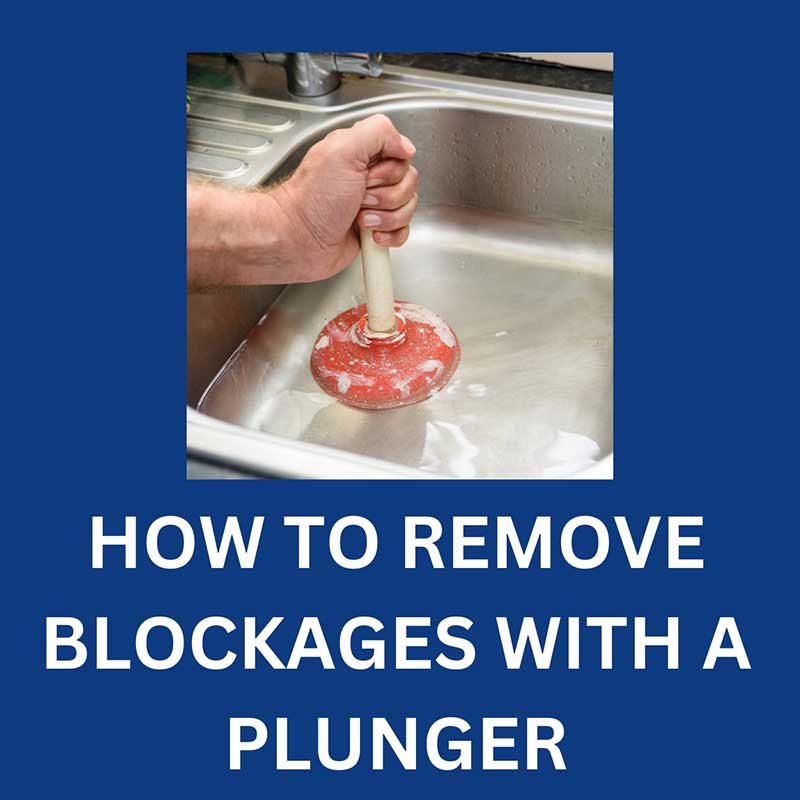
Many blockages can be cleared quickly with a plunger. Before calling a Plumber, try the Plunger!
Every household should have two plungers a cup plunger and a flange plunger.
Cup Plunger
Cup plungers are also known as ‘regular’ ‘standard’ and traditional plungers and are a rubber ‘cup’ on a handle. The ‘cup’ is shaped like a bowl with flat edges so a seal can be made and’s available in different diameters anywhere between 70-130mm. The handle can be wood, metal, or plastic and’s available in various lengths; some have ergonomic designs. Shorter handles are better for smaller combined spaces while longer handles provide better leverages.
Cup plungers are best for unblocking sinks, basins, baths and showers
Flange Plunger
Flange Plungers are also referred to as ‘toilet plungers’ because they are best for unblocking toilets available with different handles in different lengths and shapes. The cup features a flange that pokes out of the cup fitting into the toilet creating a perfect seal. Some flange plungers have ‘fold’ in flanges, so the Plunger doubles up as a cup plunger.
For hygiene reasons never use the same plunger for the sink and toilet, the very reason we recommend you have two plungers on hand a cup and a flange plunger.
DO NOT use a chemical drain unblocker before plunging on a toilet, sink, bath, basin or shower it’s dangerous you could easily splash yourself with corrosive acid if you have used chemicals and it hasn’t cleared the blockage DON’T PLUNGE, give us a call.
How To Unblock Sinks, Basins Baths and Showers With A Cup Plunger
Get your Cup Plunger ready cover up all other drains in the room that don’t need plunging by inserting the plugs or putting a wet towel over the drain this will stop air escaping making the plunging more effective.
You can cover the edges of the ‘cup’ with vaseline which will create a tighter seal; this isn’t ‘make or break’ so don’t worry if you don’t have any Vaseline to hand.
Cover the drain with the plunger cup and push down and pull up gently, so you don’t undo the seal. Continue this down and up motion for up to 30 seconds, if this doesn’t clear your blockage, try again. Still not cleared?
You need a Plumber.
How To Unblock A Toilet With A Flange Plunger
First of all, check the water level in the toilet, if it’s full or nearly full wait a while to see if any drains away. Many blockages allow water to pass (slowly) whatever you do don’t flush; you could end up with a flood.
Full blockages don’t allow water to pass, empty some water into a bucket before you start plunging.
Get your Flange Plunger, ensure the flange is poking out. Place the plunger on top of the drain making sure the flange goes into the drain.
Push down and pull up gently carry on for 30 seconds or so if the blockage doesn’t clear you can try again if the blockage still doesn’t clear it’s too severe and requires professional attention.
Give us a call, and we’ll remove the blockage for you.
Preventing Blockages
Once you have removed the blockage, try to ensure blockages are prevented in the future. Prevention is always better than cure.

Hi, I’m Terry, the founder and owner of TM Hughes & Son Gas Services
Please get in touch to book an appointment or receive a free, no-obligation quote
Call – 01245 830075
Email – info@tmhughesandson.uk
